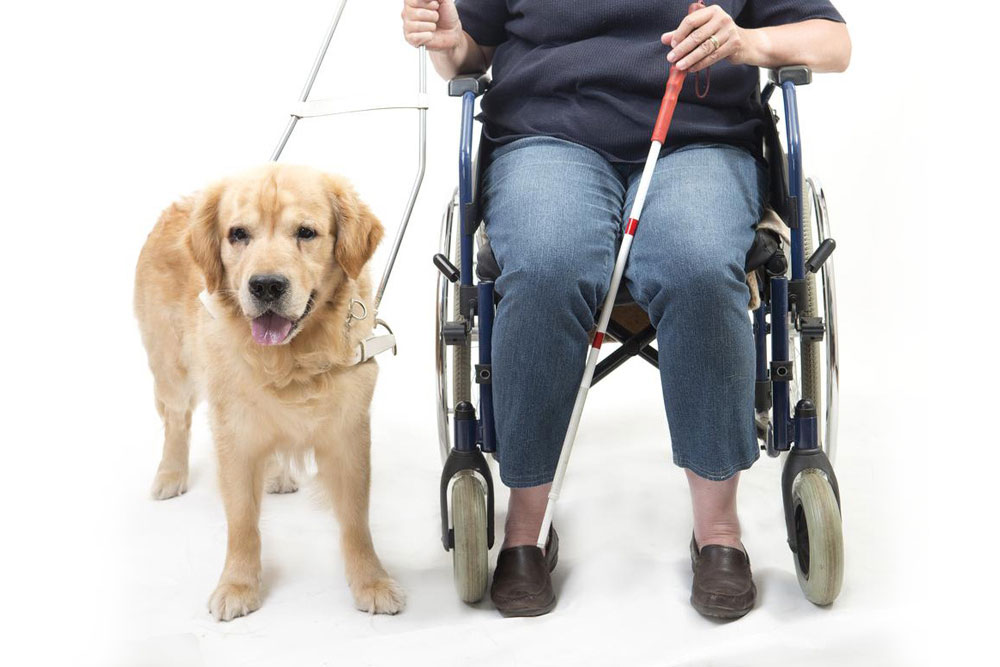Public access test for getting a service dog certification
A service dog must be trained to be able to perform any major life tasks for a person with disability according to the Americans with Disabilities Act (ADA). Since service dogs are provided access to public areas such as housing complexes, hotels, restaurants, airports, airplanes, museums etc, it is essential that they are well behaved and stable around public. In order to get a service dog certification, your dog must pass the Public Access Test.

Note that the below mentioned commands are suitable for on-leash service dogs only. Service dogs that are not on-leash are also eligible for certification as long as they display an unobtrusive behavior.
The below commands can be given to service dogs, verbally or using hand signals, or a combination of both. Some service animal registries certify service dogs that have been trained by the handlers themselves to meet specific needs of their disabilities.
Sits on command: Your service dog must sit as soon as you give this command. It should not take more that two commands or simple gestures for it to heed to your instruction.
Controlled entry through a doorway: As soon as you enter a building, your service dog must not wander off unattended or do something to attract attention towards itself. It must walk beside you quietly util you are inside a building.
Heeling through a building: Your service dog must walk not more than a foot away from you, in a calm and controlled manner without seeking public attention. It must walk in crowded areas without interacting with any members of the public.
Restaurant: If you are seated in a restaurant, the service dog must sit under the table or sit close to you.
Noise: Your service dog must not react in an aggressive manner to noises. A startle is only natural but that should not lead to any aggressive reaction.
Getting out of a vehicle: The service dog must wait until it is released from a vehicle by the handler or is given a command to step out. It must not run around or ignore commands.















